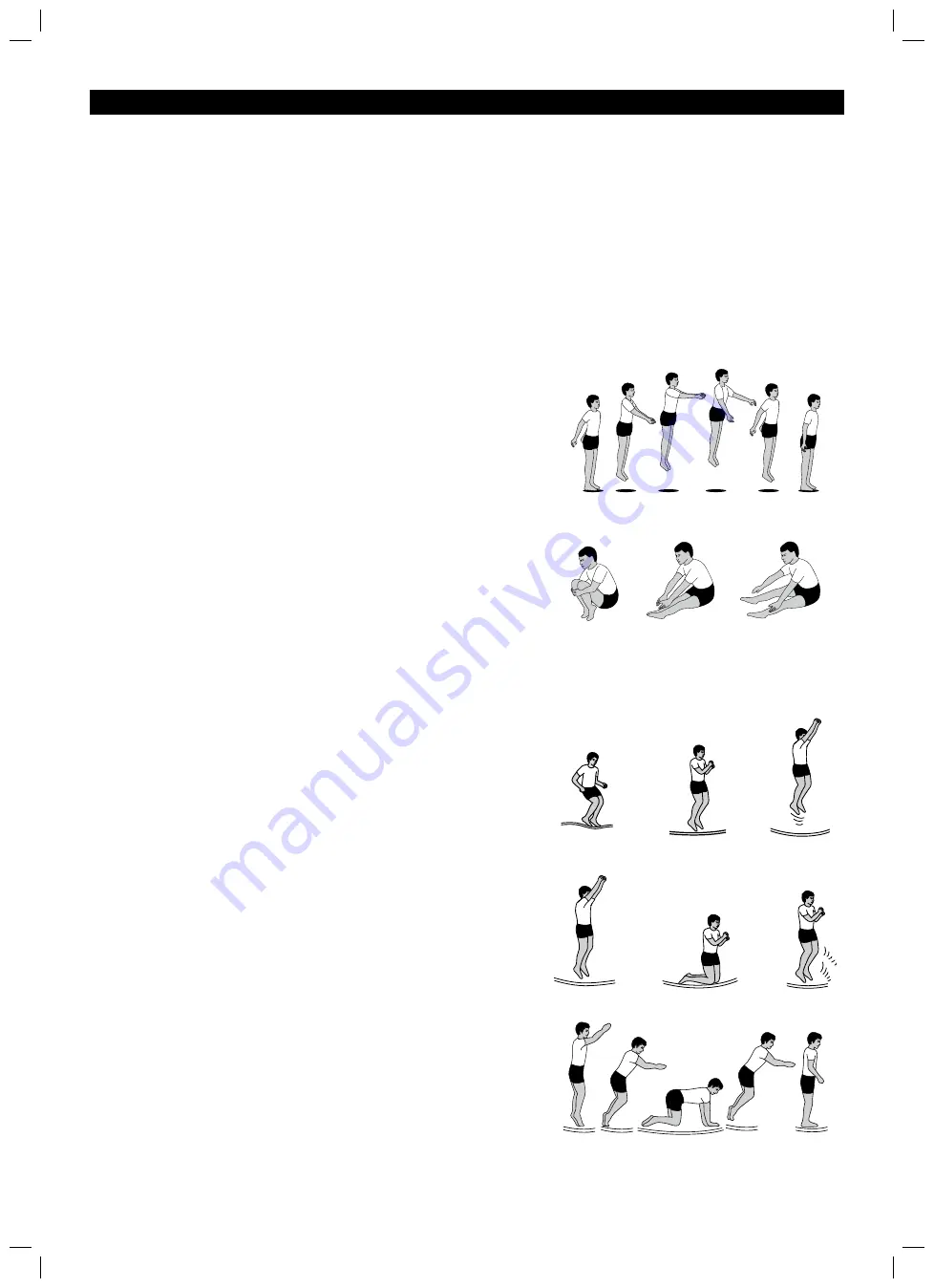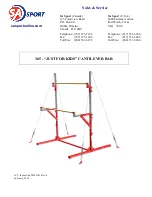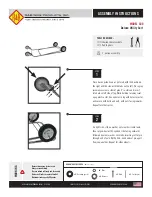
10
TRAINING WITH THE TRAMPOLINE
Fundamental trampoline skills
Bouncing
The most important thing about bouncing is that it should be done with control in the center of the mat.
The basic bounce should always be low. High, reckless bouncing should never be allowed.
Stop Bouncing
This technique allows the jumper to gain control by stopping quickly. It is achieved by keeping the feet
in contact with the mat, and absorbing the rebound of the trampoline with the knees and waist. This skill
should be the first skill learned and should be employed whenever you feel out of balance, or land away
from the centre area.
•
Stand in the center of the mat with your feet about hip-width apart.
•
Attempt about three easy bounces, keeping them low and controlled.
•
Focus your eyes towards the perimeter of the trampoline while bouncing in order to keep your balance.
•
Stop the bounce by bending your knees and bringing your hips in contact with the mat.
Arm Action
Arms are very important for proper control and lift. Whenever
you go up, your arms go up. They go up to a set position about
shoulder height and shoulder width. They should remain in this
balanced position until you start coming down. Then they circle
down and go slightly behind the hips, ready to be lifted as you
bounce up.
Bounce variations
The illustration on the right shows three variations, the tuck,
the pike, and the straddle pike, respectively. These should be
assumed at the top of the bounce, before resuming the normal
landing position on your feet. Practice these simple variations
and concentrate on perfect form. Make sure that your toes are
pointed and your fingers straight. These are simple variations
to the basic bounce and are very important for gaining
experience in coordinated movement.
Training
1. Basic jump
•
Stand straight on the trampoline.
•
Gather a little momentum with your arms and jump at the
same time from the mat.
•
Hold your feet together in the air and point toes downward.
•
Focus your eyes towards the perimeter of the trampoline
while bouncing in order to keep the balance.
•
Hold your feet in shoulder width when landing.
•
When you want to stop, bend your knees and hips when your
feet come into contact with the trampoline to stop bouncing.
2. Knee bounce
•
Start with the basic jump, hold a low height.
•
Land on your knees, hold your back straight.
•
Keep balance with your arms.
•
Gather a little momentum with your arms to go back to
standing position.
3. Hands and knees bounce
•
Start with the basic jump, hold a low height.
•
Land on your hands and knees. Make sure you put the weight
on both of your hands and knees. Do not sit on your heels.
•
Remain this position and try to bounce. Do not rock back and
forth between the hands and knees. Develop an even landing
on all of the four points.
•
Look slightly in front of your hands when landing. Push to
rebound to your feet.
084-0263-Cantire-14 ft Trampoline Enclosure-GB-01.indd 10
11-10-20 ��5:49






























